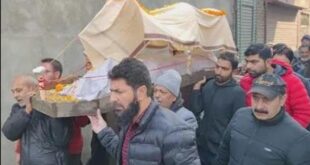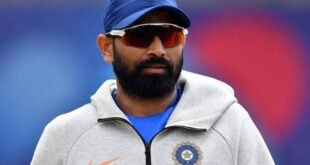The Tablighi Jamaat image has been portrayed in a bad light but never do the media talk about its origin, existence and function
By Shakeb Zuber
India has witnessed an alarming rise in the Covid-19 case from the past one week. There is a huge outcry of demands like medical supplies and increase in the test, but our priorities seems to be pretty much sorted in playing the blame-game. Initially, when the covid-19 impact was felt in India, people seemed to have united for the cause, but it didn’t take much time for our mainstream media to stoop down into the narrative of the communal division. India perhaps remains the only country where corona virus has found religion and it all happened inside the Nizamuddin Markaz. In an attempt to demonise a particular community no stones were left unturned, the people could now see the visible enemy which can be targeted, questioned and even boycotted. On the surface, attempts were made to keep the social harmony and not to pick out on an particular community , but the given animosity remained and communal seed was already sown through provocative speech, fake news and whatsapp forwards. Tablighi Jamaat gained more popularity than the corona pandemic itself, twitter was trending with the hashtags like ‘coronajihad’ and ‘Nizamuddinidiot’. Tablighis were the new villain being representative of the larger muslim community .The Jamaat got introduced for the first time across the mainstream media and people were unaware of what the group actually represents and the image building was largely done by the media .Even for the good or for worse, Tablighi’s were either portrayed as the public enemies or with some section of media as an outright stupid.
I have myself been associated with the Tablighis but not as a member or follower but through my research work. Three years ago , I have published my dissertation work for my Bachelor’s degree at TISS Guwahati on the topic , ‘Tablighi Jamaat: A popular movement in isolation’ where the focus of my research was to understand the functioning of the Tablighi Jamaat system and to find out whether its teaching generates a concern for Human Rights in the public sphere. In this article I wish to bring out some excerpts from my finding which might help clearing certain myths and propaganda surrounding the Tablighi Jamaat.
History and Origin:
Tablighi Jamaat is a form of popular Sunni Islamic movement that originated in the Mewat region of India in the 1920’s. The entire set up which even till today the Tablighis follow was ascribed by Mawlana Ilyas, founder of the Tablighi Jamaat movement where initially people were called out and invited to attend the sessions containing lectures on the Islam and towards the path of the Sunnah (deeds of Prophet Mohammad). The ‘Gasht’ or making rounds to invite people for a prayer became quite important where people assembled in groups roam around from door to door and in the market place in order to invite people for the session. The set up remained pertinent to only few mosque and madarsa’s during the initial period. However, during the reign of the second Amir of the Tablighi movement when it gained the status of the transnational struggle, the entire institution was bureaucratized the headquarters was established in Nizamuddin area of New-Delhi from where the entire activities of the Jamaat system is operated both in India as well as abroad.
Structure:
The structure of the Jamaat system is hierarchically organised and remains bureaucratic in nature, where a group consisting of the Amirs(Leaders) and the council are assigned to carry forth the task in each and every level .The fascinating point for the Tablighi movement is that the working committee and members functions without fee or salaries and even with the absence of welfare or educational program. The entire movement functions without any given code of conduct and there is no literature writings that contributes the organizational division rather it has been laid down by the oral tradition where the actions to be done and the ways by which council should operate is always dictated before the start of any session. There are several layers of organizational structure which function as a typical bureaucratic setup , at the top remains the headquarter or the Markaz at Nizamuddin which remains a main body and govern the entire system, send different groups remotely to the different parts of the country or even abroad. Following the structure, every state in the country has got its head office in the capital city which looks after the task which is dealt in the state level sending different groups to different part of the state. Similarly, every city has got its head office in the main mosque from where different groups are recruited and assigned task to carry forward their teachings in the local mosque. Groups assigned from every level has to operate in local mosque where they will be provided the accommodation and where the primary task is to invite people and have a regular session dealing with aspects and teachings of Islam.
It is the local mosque where grass root level of teachings are done so it remained ultimately within the sphere of public interest to join the session or not, yet the invitations are carried out by the Jamaat during their stay in the particular area. Every local mosque of the Deobands has representation of their own Jamaat. There are two kinds of Jamaat that operates in local mosque –
1-Local Jamaat- This jamaat group consist of the members of the same locality under the guidance of the local Imam (priest) , the local jamaat usually deals with the weekly Dawah session (Usually on Fridays) and Invite people towards the larger Islamic struggle which they consider is preaching of the divine teaching . The members also invite other people to be a regular part of the Jamaat movement and to dig out certain time from their life for the cause of the Jamaat.
2-Visiting Jamaat- This jamaat group are the visitors in the local mosque, who visits the local deobandi mosque from a different locality/city/state or even different country after the consulation of the Amirs in respective Markaz (Head office).
Functioning:
The main Dawah session usually begin after the Asr (Evening) prayer before which there is a ‘Mashwara’ or consultation session during which certain important decisions are made and several roles are assigned by the ‘Amir’ for the main session with the consultation of fellow Tablighi members During the Dawah session, certain ethical concerns are put into practice such as the maintain distance from the door , greeting people with humility, not compelling people to join the session against their will and so on. During the sermon session, public lectures are delivered in the form of invitation to carry out the Islamic spiritual struggle by following along the lines of the Prophet. The teachings dealt during the session focuses around the six point plan of action which remains central to the Tablighi Jamaat principles ( Dealt in the next chapter). The Dawah methods include 40 days sufi practise of reclusion (chilla) and Dhikr (knowledge and remembrence), public gatherings, groups making rounds including teaching and disputation. As Mohammad Mustafa, one of the members of the Tablighi Jamaat has to say ,‘’Every community is fighting for their idea of rights and justice, which has some point of contention with the other community; the important thing is to have a dialogue with those brothers who belong from a different community and to come together to a point where the truth would flourish and that surely is one of the fundamental principle of Islamic thought’’. Towards the end of the session, people are asked to give their names for the Dawah task in the form of visiting Jamaat in other mosques. Finally the session ends with the concluding remarks and the ‘Dua’ offered to the almighty to seek in meeting the Jamaat’s objective.
Tablighi Jamaat has been running efficiently for almost a century and has had almost no record of nuisance keeping itself away from all the political ties. Throughout the year Jamaat has sessions and visit different cities and lodge within the mosque premise. The claim that Tablighi’s are ‘hiding’ rather than ‘trapped’ in a mosque was carried out of proportion and in ignorance.The jamaat just like any other religious organisation runs to carry out its objectives to spread its teaching and philosophy. To cheery pick one mistake and paint a demonic picture of the organisation has resulted in the image problem which they have to bear the brunt for years to come. The unprecedented violence and social boycott of the entire community has been an after math of the media trail.
 Al Haqeeqa
Al Haqeeqa





